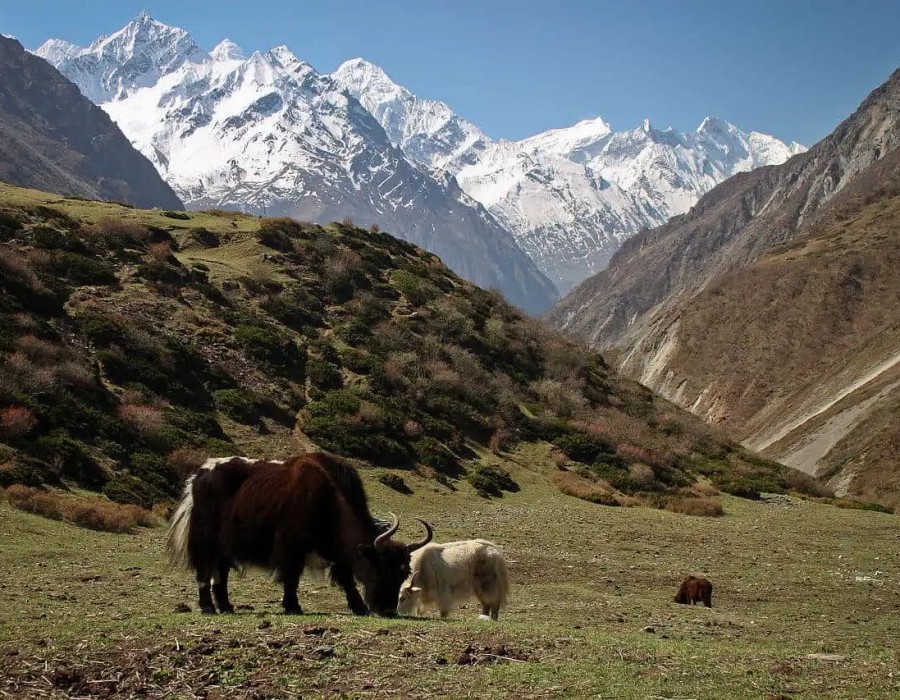The Tsum Valley Trek is a peaceful and culturally rich journey in the northern part of the Gorkha district of Nepal. It lies close to the Tibetan border and offers a deep look into traditional Buddhist culture, ancient monasteries, and untouched mountain landscapes. The valley was opened to trekkers only in 2008, so it still feels quiet and unexplored compared to other trekking regions.
Where the Trek Takes You
The trek usually begins from Soti Khola or Machha Khola, following the same route as the Manaslu Circuit in the beginning. After reaching Philim, the trail branches off toward the Tsum Valley. You walk through forests, suspension bridges, and stone-paved villages before reaching the upper valley.
Major villages along the route include Chumling, Chhekampar, and Nile. The trail continues up to Mu Gompa, one of the most important monasteries in the region, surrounded by snowy peaks and wide mountain views.
Culture and People
The people of Tsum Valley are known as Tsumbas. They follow Tibetan Buddhism and have preserved their language, traditions, and customs for centuries. The valley is dotted with ancient monasteries, chortens, mani walls, and prayer flags, showing the area’s deep spiritual roots.
Staying in the local teahouses is a highlight of the trek. You can share meals like butter tea, barley bread, and local noodles, and learn about life in one of Nepal’s most remote regions.
Best Time to Trek
The best time to visit Tsum Valley is autumn (September to November) and spring (March to May). These months offer clear skies, stable weather, and great views of mountains such as Ganesh Himal and Himalchuli. In spring, the hills are covered with rhododendron flowers, making the journey even more beautiful.
Trekking Difficulty
The Tsum Valley Trek is considered moderate to challenging. The trails are steep in some sections, and the altitude can reach over 3,700 meters. Physical fitness and good preparation are important. The trek is not technical, but walking for several hours each day through rough terrain can be tiring. A guide and porter are highly recommended for safety and local support.
Permits Required
Because the valley is a restricted area, you need special permits. These include the Tsum Valley Restricted Area Permit, Manaslu Conservation Area Permit (MCAP), and sometimes the Annapurna Conservation Area Permit (ACAP) if your route connects with the Manaslu Circuit. Trekking must be done with a registered guide or through a licensed agency.
Why Choose the Tsum Valley Trek
The Tsum Valley Trek is perfect for those who want to experience the spiritual and cultural side of the Himalayas. It’s less crowded, peaceful, and full of authentic mountain life. The mix of stunning scenery, Buddhist culture, and warm hospitality makes it a memorable adventure for anyone seeking quiet beauty in the Himalayas.





Comments